backup options for combat optics
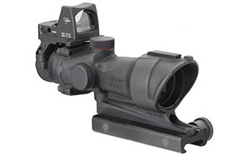 It’s always up to the operator to determine which configuration works best for him, but with the reliance on battery operatored optics and high mounted optics, it’s really a good idea for a user to consider the what ifs. What do you do with your Eotech if the batteries die? What happens if the optics come loose ? Scope mounts can come loose and even break, I’ve seen this happen on M1A rifles, AK, FAL and AR15s on several ocassions. Sometimes its a good idea to train yourself to be able to hit a target without even a rear sight. There have been several times where I actually forgot to flip up my rear sights on my co-witness configuration and just used the sight picture from my Eotech optic and the front sight post. I never missed what I was aiming at and it was actually good practice for me.
It’s always up to the operator to determine which configuration works best for him, but with the reliance on battery operatored optics and high mounted optics, it’s really a good idea for a user to consider the what ifs. What do you do with your Eotech if the batteries die? What happens if the optics come loose ? Scope mounts can come loose and even break, I’ve seen this happen on M1A rifles, AK, FAL and AR15s on several ocassions. Sometimes its a good idea to train yourself to be able to hit a target without even a rear sight. There have been several times where I actually forgot to flip up my rear sights on my co-witness configuration and just used the sight picture from my Eotech optic and the front sight post. I never missed what I was aiming at and it was actually good practice for me.
If you can get a good cheek weld, and you know approx. where your poi is, you should be able to hit a man size target out several hundred yards with just a front sight post. I’m sure you’ll burn through a few more rounds to hit your target, but it is possible. Many Trijicon ACOG rifle scopes are being used with red dots mounted on the top or have iron sights mounted on the top of the scope. The TA01 NSN seems to be the popular configuration I am seeing around. This will give you fast transition from CQB or long range engagements, It also gives you more than one targeting system incase one goes down.
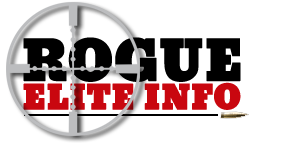




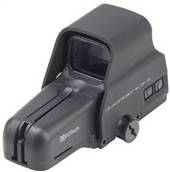 Today I took my newest LWRC rifle to the range to break it in. This is a combat rifle and I expect that it eventually get pretty beat up, but it’s always a good idea to run through some firing drills before you rely on it. Some of the biggest malfuntion problems I have seen on the firing line were with supposedely brand new out of the box rifles. Sometimes there are bugs or issues that are easy to fix, but you really need to put some lead down range with your rifle or pistol before you rely on it. I’ve mentioned before about a time when I saw a guy show up with a Beretta 92FS inox pistol and it jammed after every round. The shooter was very frustrated because this was it’s first range trip. Well, turns out that the pistol was bone dry and had absolutely zero lubrication on it and with one wipe down, the gun ran flawlessly. The same should go for any firearm. I strongly suggest cleaning guns every once in awhile, even if you haven’t shot them. Lubrication can run off of guns or drain off, and I also highly recommend using a small level of grease on even pistols, especially if they may sit in a gun safe for long periods of time.
Today I took my newest LWRC rifle to the range to break it in. This is a combat rifle and I expect that it eventually get pretty beat up, but it’s always a good idea to run through some firing drills before you rely on it. Some of the biggest malfuntion problems I have seen on the firing line were with supposedely brand new out of the box rifles. Sometimes there are bugs or issues that are easy to fix, but you really need to put some lead down range with your rifle or pistol before you rely on it. I’ve mentioned before about a time when I saw a guy show up with a Beretta 92FS inox pistol and it jammed after every round. The shooter was very frustrated because this was it’s first range trip. Well, turns out that the pistol was bone dry and had absolutely zero lubrication on it and with one wipe down, the gun ran flawlessly. The same should go for any firearm. I strongly suggest cleaning guns every once in awhile, even if you haven’t shot them. Lubrication can run off of guns or drain off, and I also highly recommend using a small level of grease on even pistols, especially if they may sit in a gun safe for long periods of time.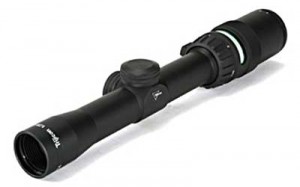 Optics have multiple purposes. They can be used for Astronomy, Scouting, birdwatching, target shooting, hunting and military purposes. With the emergency of combat optics for close quarter combat, scopes used on rifles have gotten smaller, more compact and sometimes have zero magnification. The point is to give you a good sight pictures and a reticle that is easy to follow.
Optics have multiple purposes. They can be used for Astronomy, Scouting, birdwatching, target shooting, hunting and military purposes. With the emergency of combat optics for close quarter combat, scopes used on rifles have gotten smaller, more compact and sometimes have zero magnification. The point is to give you a good sight pictures and a reticle that is easy to follow.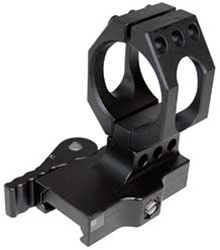 Another issue you may run into when using hunting style optics on a military style rifle is this. What are you going to do if the optic fails or breaks? Are you going to need to u se a screw driver to remove it or can you detach it quickly? Quick detach optics and accessories can become very important if you have a failure of some sort. For instance, I’ve seen plenty of incidences where soldiers in Iraq took bullets in their optics but the rifles still worked. Always have backup irons on an M4 is a good idea. Not only can batteries on something like a Eotech gun sight go down, but sometimes that can actually get broken from being slammed around or from fragmentation. The Mini 14 ranch rifle is a very manueverable Carbine. Even though the Eotech optic is primarily for military purposes, I’ve found the Eotech to work very well on a Mini 14 Ranch rifle. The MOA dot works well with a gun that can shoot MOA as long as the rifle barrel has not heated up, which normally occurs after the 3rd shot, but from a hunting standpoint, I rarely know anyone that takes 3 shots on any hunting trip.
Another issue you may run into when using hunting style optics on a military style rifle is this. What are you going to do if the optic fails or breaks? Are you going to need to u se a screw driver to remove it or can you detach it quickly? Quick detach optics and accessories can become very important if you have a failure of some sort. For instance, I’ve seen plenty of incidences where soldiers in Iraq took bullets in their optics but the rifles still worked. Always have backup irons on an M4 is a good idea. Not only can batteries on something like a Eotech gun sight go down, but sometimes that can actually get broken from being slammed around or from fragmentation. The Mini 14 ranch rifle is a very manueverable Carbine. Even though the Eotech optic is primarily for military purposes, I’ve found the Eotech to work very well on a Mini 14 Ranch rifle. The MOA dot works well with a gun that can shoot MOA as long as the rifle barrel has not heated up, which normally occurs after the 3rd shot, but from a hunting standpoint, I rarely know anyone that takes 3 shots on any hunting trip. There is a point where people have to learn to realize that there are a great many firearms manufacturers out there that are making suberb firearms. I’ve heard people claim that a certain firearm was superior in reliability over another. Well, that is true to some degree, but I’d have to say there are some firearms that are in the top tier category and the durability and reliablity differences may vary in extreme circumstances. Take a Glock 17 and put it up against a Sig 226 and you’ll see what I mean. I’m sure the Glock will reguire less lubrication, but there won’t be much difference in 98% of circumstances.
There is a point where people have to learn to realize that there are a great many firearms manufacturers out there that are making suberb firearms. I’ve heard people claim that a certain firearm was superior in reliability over another. Well, that is true to some degree, but I’d have to say there are some firearms that are in the top tier category and the durability and reliablity differences may vary in extreme circumstances. Take a Glock 17 and put it up against a Sig 226 and you’ll see what I mean. I’m sure the Glock will reguire less lubrication, but there won’t be much difference in 98% of circumstances.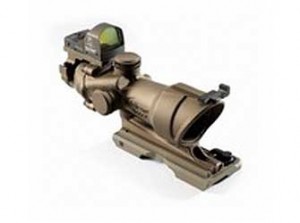 One problem that any hunter already knew was using too much magnification meant slow target acquisition, especially at close ranges. Field of view is even more important in combat than in hunting. In Combat you may be looking at a bad guys face with your reticle right on him, but 6ft to his right is a guy with his sights right on you that you can’t see. I’d have to say that I belive that 3x-4x is probable the best of both worlds. Trijicon knew that even an optic with zero magnification like the Eotech had an edge in some situations so now they have Trijicon ECOS which has a red dot optic which sits on top of the scope. This will eliminate the problem of magnification in close quarters situations.
One problem that any hunter already knew was using too much magnification meant slow target acquisition, especially at close ranges. Field of view is even more important in combat than in hunting. In Combat you may be looking at a bad guys face with your reticle right on him, but 6ft to his right is a guy with his sights right on you that you can’t see. I’d have to say that I belive that 3x-4x is probable the best of both worlds. Trijicon knew that even an optic with zero magnification like the Eotech had an edge in some situations so now they have Trijicon ECOS which has a red dot optic which sits on top of the scope. This will eliminate the problem of magnification in close quarters situations.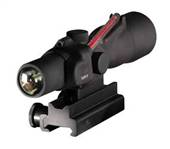 Keeping a scope cover on your objective and being aware of your flash is extremely important. I highly recommend a flash kill cover for any combat optics and also suggest a cover for your flashlight. Even something like a red lense will help avoid giving away too much reflection. Flashlights are probable the biggest giveaway in low light even if you don’t turn them on. Next time your at the range, put your rifle on the bench and walk down range and look again. Keep in mind that even though you may be 50-100yds away and wearing camoflauge, your fancy schmancy M4 has various points of reflection and even moonlight will have an impact.
Keeping a scope cover on your objective and being aware of your flash is extremely important. I highly recommend a flash kill cover for any combat optics and also suggest a cover for your flashlight. Even something like a red lense will help avoid giving away too much reflection. Flashlights are probable the biggest giveaway in low light even if you don’t turn them on. Next time your at the range, put your rifle on the bench and walk down range and look again. Keep in mind that even though you may be 50-100yds away and wearing camoflauge, your fancy schmancy M4 has various points of reflection and even moonlight will have an impact.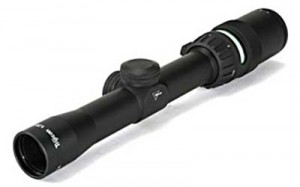 Trijicon has also diversified their optics for hunting and target shooting. The Accupoint optics are low-variable power optics that give operators some level of magnification, but still have the speed that Trijicon optics are known for. The Accupoint reticles come in red triangle, Amber dot, Green triangle, and green dot. These have started to show up on bolt action rifles and DMR used in the military. They are reasonable priced and all under $1000 dollars.
Trijicon has also diversified their optics for hunting and target shooting. The Accupoint optics are low-variable power optics that give operators some level of magnification, but still have the speed that Trijicon optics are known for. The Accupoint reticles come in red triangle, Amber dot, Green triangle, and green dot. These have started to show up on bolt action rifles and DMR used in the military. They are reasonable priced and all under $1000 dollars.
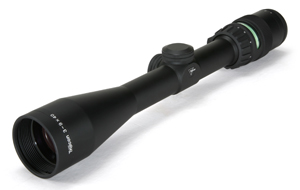 For CQB some may prefer zero power optics and just a dot, but for people looking for something that doesn’t rely on batteries and can be used for fast target engagements out to 600yds+. I’m starting to see a lot of M1A and FAL owners swapping out the standard 3-9×40 optics and slapping on the Trjicon Accupoints.ll models in the AccuPoint Series operate battery free—eliminating the potential for failure during critical moments in the field. They also feature Trijicon’s Manual Brightness Adjustment Override, which allows you to control the light output of the fiber-optics during daylight. AccuPoint® riflescopes include other advanced elements like multi-layer coated lenses for superior light transmission with no distortion, quick-focus eyepiece, long-eye relief, and precise windage and elevation adjustments.
For CQB some may prefer zero power optics and just a dot, but for people looking for something that doesn’t rely on batteries and can be used for fast target engagements out to 600yds+. I’m starting to see a lot of M1A and FAL owners swapping out the standard 3-9×40 optics and slapping on the Trjicon Accupoints.ll models in the AccuPoint Series operate battery free—eliminating the potential for failure during critical moments in the field. They also feature Trijicon’s Manual Brightness Adjustment Override, which allows you to control the light output of the fiber-optics during daylight. AccuPoint® riflescopes include other advanced elements like multi-layer coated lenses for superior light transmission with no distortion, quick-focus eyepiece, long-eye relief, and precise windage and elevation adjustments.